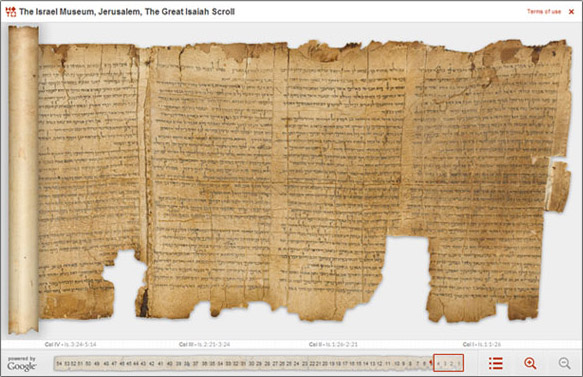So begins an article in USA Today about the availability of the Dead Sea Scrolls online, free for anyone who has computer access. You can read the article or, if you wish, go directly to the web site where the Scrolls are available for your viewing. Whether or not you read them or about them, this represents a profound gift of technology in which these very unique items have been moved from the climate controlled rooms of museums and universities into the mainstream.
Click here to be transported into the discoveries yielded by an accidental visit to caves that hid for centuries our oldest bits and pieces of the Old Testament as well as other documents. Of the Great Isaiah scroll, one of the original seven Dead Sea Scrolls discovered in Qumran in 1947, we have the largest (734 cm) and best preserved of all the biblical scrolls, and the only one that is almost complete. The 54 columns contain all 66 chapters of the Hebrew version of the biblical Book of Isaiah. Dating from ca. 125 BCE, it is also one of the oldest of the Dead Sea Scrolls, some one thousand years older than the oldest manuscripts of the Hebrew Bible known to us before the scrolls' discovery.
The version of the text is generally in agreement with the Masoretic or traditional version codified in medieval codices, such as the Aleppo Codex, but it contains variant readings, alternative spellings, scribal errors, and corrections. Unlike most of the biblical scrolls from Qumran, it exhibits a very full orthography (spelling), revealing how Hebrew was pronounced in the Second Temple Period.
At the sight you can click on the text and it becomes an interactive scroll, unfolding the book of Isaiah (with translation provided from the Masoretic Text. Wow.... fascinating!!

1 comment:
Wow. Makes one wish they could read the Hebrew.
Post a Comment